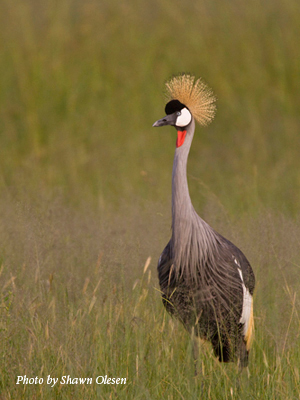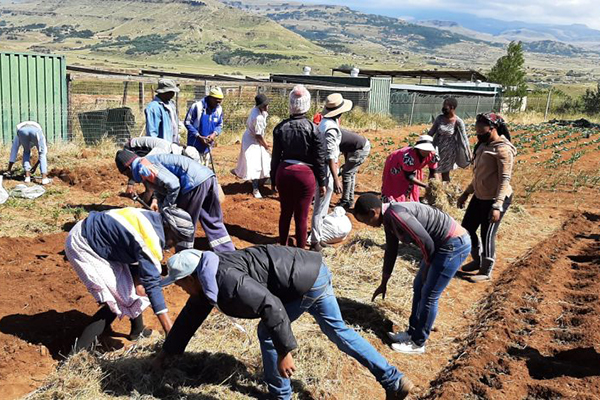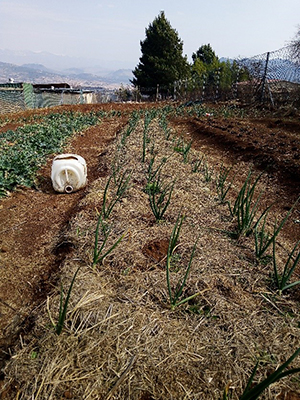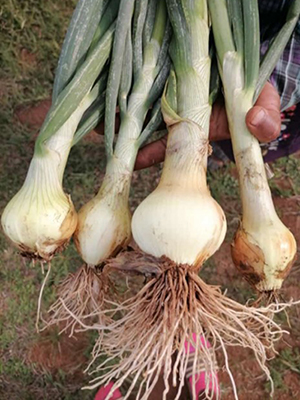 In 2020, we saw some of the most desperate situations arise across South Africa due to the Covid-19 virus and the effects of lockdown on vulnerable communities. In KwaMkhize, a community in the foothills of the majestic Drakensberg Mountains in KwaZulu Natal, a group of youth who had felt the harsh effects of hunger requested help from our partners, The Endangered Wildlife Trust. The community members wanted to change their future by creating not only a food security garden but a sustainable garden. The local authorities fully supported their endeavors and were delighted to have the training the community needed to drive food security projects.
In 2020, we saw some of the most desperate situations arise across South Africa due to the Covid-19 virus and the effects of lockdown on vulnerable communities. In KwaMkhize, a community in the foothills of the majestic Drakensberg Mountains in KwaZulu Natal, a group of youth who had felt the harsh effects of hunger requested help from our partners, The Endangered Wildlife Trust. The community members wanted to change their future by creating not only a food security garden but a sustainable garden. The local authorities fully supported their endeavors and were delighted to have the training the community needed to drive food security projects.
The Drakensberg Crane Conservation Project’s priority community engagement work is focused on conservation agriculture and capacity building, public awareness and education, and health and environment. Our project communities, such as KwaMkhize, are predominantly unemployed and surviving mainly on social grants and agricultural products. Even though agriculture is seen as key in addressing food security in communities along the Drakensberg, the extent of alien plant infestation, soil erosion, overgrazing and poor soil quality continue to be impediments to enhancing food security in the area.
Introducing Communities Permaculture Gardening
To find a lasting solution to the issue, the project facilitated training on permaculture gardening. Permaculture is the development of agricultural ecosystems intended to be sustainable and self-sufficient. Much like no-till farming, permaculture protects the soil structure of the ground and allows the carbon sequestration capability to remain intact, benefitting the environment.

The training focused on improving soil health by applying organic fertilizers, soil mulching and vertical contour lines to conserve water while maintaining soil stability. Permaculture training covered both the orientation and practical elements. The practical element of the training included the actual plowing, landscape designing, composting, furrowing, planting, watering and mulching.
Ntombenhle Mtambo, a locally renowned permaculture leader, trained over 30 youths passionate about growing their food and looking after their soil. Nombenhle, however, never tells someone how to do something but rather lets them experience the difference. The youth, therefore, dug and planted a traditional garden, and next to that, they dug a permaculture garden. The aim was to demonstrate to the youth that understanding the environment and soil will teach the youth to see the difference between sustainable land use and non-sustainable land use. Ntombenhle is a clever lady like that!
 Permaculture and Crane Habitat
Permaculture and Crane Habitat
You may be wondering how developing sustainable gardening helps cranes? In water catchment areas where cranes live, it is vital that the soil structure of grasslands and wetlands on which they rely for breeding is protected and sustainably utilized. In the face of global warming and the effects of climate change, land-use practices need to change to enable the survival of communities and cranes. In addition, no-till farming and gardening protect the land from soil erosion. The mulch formed creates a soak to hold water, vital for sustainability in countries with water shortages like South Africa.
Permaculture gardening by design can support the production of crops throughout the year, which plays an important role in enhancing sustainable food security while ensuring environmental improvements in communities. The community permaculture gardens are now reference points to expand the gardens to their homesteads. Recipients of the training were also encouraged to identify households in distress (sick, elderly and disabled) and help develop and maintain permaculture gardens in their households.
 These interventions have been quite revolutionary and are proving very effective in addressing the food security problem in our focal communities. The arrival of the Covid 19 pandemic caught many communities off-guard, and our focal communities were not spared in this regard. They find themselves battling to feed their families. These interventions, along with food parcels for households in distress, have thus come at the right time because not only are they addressing the food security issue, but they are also playing a pivotal role in promoting resilient communities.
These interventions have been quite revolutionary and are proving very effective in addressing the food security problem in our focal communities. The arrival of the Covid 19 pandemic caught many communities off-guard, and our focal communities were not spared in this regard. They find themselves battling to feed their families. These interventions, along with food parcels for households in distress, have thus come at the right time because not only are they addressing the food security issue, but they are also playing a pivotal role in promoting resilient communities.
We are delighted to continue supporting these enthusiastic and environmentally conscious individuals. We are continuing the training in other crane-sensitive rural communities, and often where little support has been received previously. If you have never seen the difference, we encourage you to try it out in your gardens at home!
This project is supported by the Paul King Foundation and N3TC.

 Story submitted by Drakensberg Coordinator Lara Jordan and Senior Community Project Officer Samson Phakathi.
Story submitted by Drakensberg Coordinator Lara Jordan and Senior Community Project Officer Samson Phakathi.
